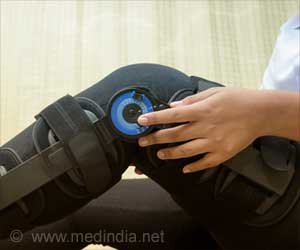Radiation exposure is one of the dangerous aspects of traveling to Mars. Potential health risks such as that of leukemia may occur due to deep space radiation.

TOP INSIGHT
Radiation encountered while traveling to Mars may increase the risk of leukemia.
As part of this ongoing project, the group has identified and is currently testing a common dietary supplement for its ability to protect astronauts from these damaging effects.
"It is rewarding to use our expertise in stem cells to help NASA evaluate the potential health risks of space travel and hopefully develop strategies to address them," said Porada.
Radiation exposure is believed to be one of the most dangerous aspects of traveling to Mars, according to NASA. The average distance to the red planet is 140 million miles, and a roundtrip could take three years.
The goal of the study, published in the journal Leukemia, was to assess the direct effects of simulated solar energetic particles (SEP) and galactic cosmic ray (GCR) radiation on human hematopoietic stem cells (HSCs). These stem cells comprise less than 0.1% of the bone marrow of adults, but produce the many types of blood cells that circulate through the body and work to transport oxygen, fight infection, and eliminate any malignant cells that arise.
These exposure levels that simulated deep space radiation were found to dramatically affect the health and function of the HSCs. "Radiation exposure at these levels was highly deleterious to HSC function, reducing their ability to produce almost all types of blood cells, often by 60-80 percent," said Porada. "This could translate into a severely weakened immune system and anemia during prolonged missions in deep space." Previous studies by other researchers had already demonstrated that exposure to high doses of earthly radiation, such as from X-rays, can have harmful (even life-threatening) effects on the body's ability to make blood cells, and can significantly increase the likelihood of cancers, especially leukemias. However, the current study was the first to show a damaging effect of low, mission-relevant doses of space radiation.
The next step was to assess how the cells would function in the body. Mice were transplanted with GCR-irradiated human HSCs, essentially "humanizing" the animals. The mice developed what appears to be T-cell acute lymphoblastic leukemia - the first demonstration that exposure to space radiation may increase the risk of leukemia in humans.
"Our results show radiation exposure could potentially increase the risk of leukemia in two ways," said Porada. "We found that genetic damage to HSCs directly led to leukemia. Secondly, radiation also altered the ability of HSCs to generate T and B cells, types of white blood cells involved in fighting foreign 'invaders' like infections or tumor cells. This may reduce the ability of the astronaut's immune system to eliminate malignant cells that arise as a result of radiation-induced mutations."
Porada said the findings are particularly troubling given previous work showing that conditions of weightlessness/microgravity present during spaceflight can also cause marked alterations in astronaut's immune function, even after short duration missions in low earth orbit, where they are largely protected from cosmic radiation. Taken together, the results indicate that the combined exposure to microgravity and SEP/GCR radiation that would occur during extended deep space missions, such as to Mars, could potentially exacerbate the risk of immune-dysfunction and cancer.
NASA's Human Research Program is exploring not only the effects of radiation, but also conditions of microgravity, isolation and confinement, hostile and closed environments, and distance from earth. The ultimate goal of the research is to make space missions as safe as possible.
Source-Eurekalert
 MEDINDIA
MEDINDIA



 Email
Email










